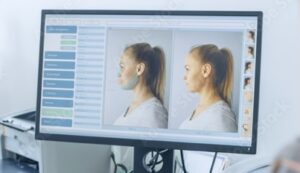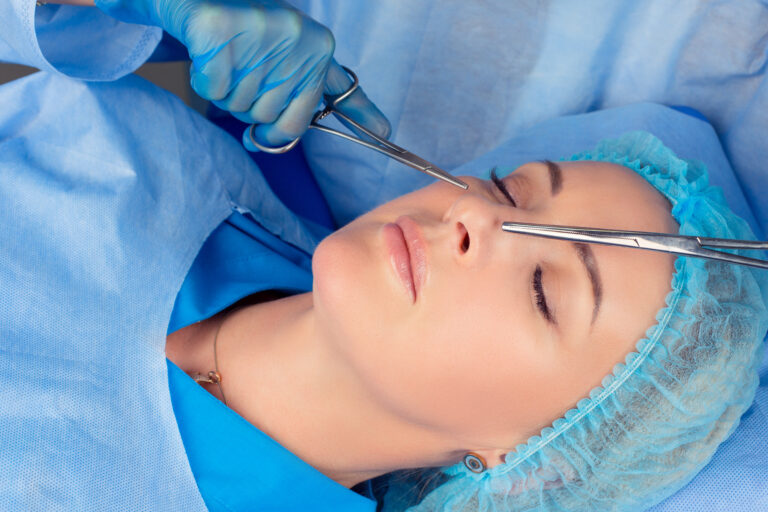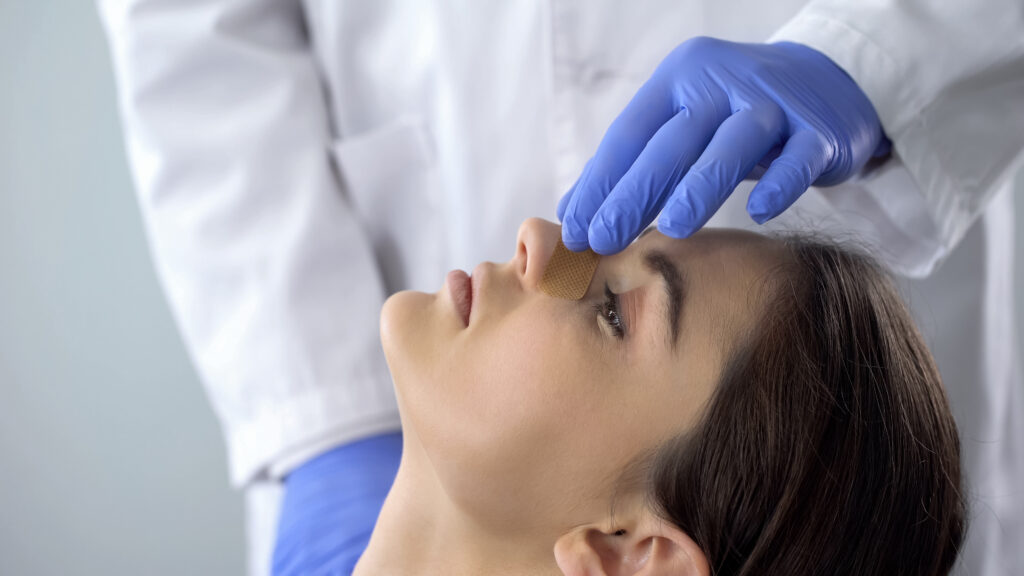It's Time to take The step
Improving our appearance can have a positive and amazing effect on how we feel, see ourselves and on how we deal with others in our daily life. Even though nowadays rhinoplasty has become extremely popular, yet the decision to have something done to your face is still a difficult decision for some people. I can totally understand those mixed emotions of the patients when taking such a decision as I’ve lived this experience hundreds of times during my journey with my Rhinoplasty patients. Yes, I do believe that fear, anxiety, excitement, worries, happiness and expectations of how the patient would look after the surgery makes it a journey for both the patient and the surgeon. Choosing the right surgeon for your nose surgery is the most important station for the success of your journey.
Rhinoplasty Consult:

It’s during your rhinoplasty consult; the bond between you and your surgeon develop. Take your time to express all your concerns. Remember you’ve waited long time to have this decision. My belief is that planning for a successful Rhinoplasty Surgery starts with a productive Rhinoplasty Consult. The patient motives, whether functional or aesthetic, must be evaluated carefully. Patient’s goals and expectations for the surgical outcomes should be known. A productive rhinoplasty consult results from the surgeon’s ability to listen carefully for the patient and from the patient’s ability to freely address their concerns. Most of the time patients know exactly what they don’t like about their noses and what they want to be done. At this time, it’s the surgeon role to honestly discuss with the patients their concerns. Giving them all the probabilities of what might be achieved and what might not be possible. Sometimes patients come to their consult without having a clear idea about what they want to change and how they want to look like after the surgery. They just ask for a ’better looking nose’. For this type of patients it’s the surgeon’s sole responsibility to guide them to figure out what could be the problem and give them his expectations.
Clinical Nasal Analysis:

An accurate preoperative systematic nasal analysis and a thorough nasal airway evaluation is essential to establish which changes are possible and to develop an operative plan .The nose should be inspected from different angles and poses,should be inspected as unit and in relation to the whole face . As the nose is composed of different units, inspection and feeling each unit is a crucial step for a preoperative imagination of the underlying anatomical structures. Skin thickness, which has a major contribution on the surgery end-result, should also be evaluated.
Computer Imaging:

Imaging and computer analysis provide a powerful technological dimension in the field of facial analysis. I think with an honest simulation for the possible postoperative result, the surgeon is able to demonstrate and discuss with the patients his intended surgical plan and will be able to deliver better all his thoughts giving the patient a better image of himself. Even with showing patients photos of previous surgeries for patients who had similar deformities, it’s still not the patient’s image. I feel it’s just a mean of telling patients ‘’ be sure I have good results’’ than an actual mean of providing patient with expectations on how he would possibly look like after the surgery. In a publication that I’ve conducted on Identical twins rhinoplasty, I came out with a conclusion that even for identical twins the asymmetries they possess might not be the same and that it’s not possible to promise them with exactly the same outcomes. I believe computer photo morphing is a tool of added value for the Surgeon/Patient surgery expectations based on the fact that the surgeon is cautious not to show the patient an image with an over expectations for the final result. The patient must have a clear idea that the image he’s seeing is just a simulation for the expected outcomes, provided for the sake of better communication and that the actual result may vary.
Surgical Techniques:

A nose job (technically called a rhinoplasty) is surgery on the nose to change its shape or improve its function. It can be done for medical reasons, such as to correct breathing problems related to the nose or correct disfigurement resulting from trauma or congenital deformities as cleft lip nose deformity.
The goal of rhinoplasty is to create an aesthetically pleasing nose those functions in harmony with the rest of the face. Rhinoplasty is a challenging procedure, often considered one of the most difficult cosmetic surgeries, requiring in-depth training, years of experience, and a specialized skill set. Anatomically the nose is formed externally by the nasal bones, the upper cartilages, the lower cartilages with the overlying skin and soft tissue. The nose projects from the face as a 3 D central structure. Different portions of the nose should be in harmony to each- others and the whole nose should be in harmony to the whole face.
There are many different rhinoplasty techniques. Over the years, thousands of rhinoplasty techniques have been described in publications, textbooks and meetings lectures.With the endless variability of nasal shapes and forms, variation of skin thickness between patients and differences in the concept of beauty between cultures, the surgeon should have good experience and knowledge about different techniques in hands for achieving the best results in surgery. I’ve been blessed of being mentored by the world’s rhinoplasty experts. Blending their techniques and experiences with my personality. My belief is that beside having the good knowledge about different techniques, It’s also important to know how and when to use the technique. The site of placing an incision, the way we place a suture or adding a graft doesn’t come from just reading the books but it’s the outcome of experience from operating on hundreds or even thousands of patients. I like to think of rhinoplasty as a puzzle game, where every piece must be in its right place in relation to other pieces or otherwise the picture will never be completed.
I totally agree with the old adage ’ Rhinoplasty is easy, it’s just difficult to get good results’. If we will think of rhinoplasty as just a reduction or augmentation of a person’s nose, a bump removal, narrowing the bridge width or even correcting a crooked nose deformity, so yes It’s easy ! The difficulty in rhinoplasty always comes from how to achieve what is termed “Good result’’ .
For me, the term ‘’Good Results’’ has been a vague term, as it could be interested in different ways between people till finally I came out with my own understandings of what a ’Good Result ‘’ could be?
I believe that a ’Good Result in Rhinoplasty’ is : A “natural looking nose’’ that fits in harmony with the whole face, meeting with the patient’s expectations and finally delivering satisfaction and happiness for both the patient and the surgeon.
Recovery and Follow up :

Recovery after rhinoplasty surgery varies from patient to patient. Swelling and bruising are expected in the initial days after surgery, however the majority of this swelling resolves within 1-2 weeks. The look of the nose will continue to improve over time with the final results of almost a year after surgery. Dressing in the nose and internal nasal splints has always been a major source of fear for patients undergoing nasal surgeries. Good news is, the techniques I am using in my surgery allow me to avoid using nasal dressings inside the nose in more than 90 percent of my cases. In rare occasions I might need to put a light dressing that will be removed in the same day before leaving the hospital .I prefer to follow up with my patients four to five times in their first postoperative year. After the first year, I never consider the surgery done unless; I have the feelings that the nose has gained its final result.
Revision Rhinoplasty
Revision Rhinoplasty is a surgical procedure, which corrects problems of an aesthetic and/or functional nature following a primary rhinoplasty surgery. Patients may be unhappy with the way their nose looks, or have functional nasal problems despite having had a nose job done.
Revision rhinoplasty is a more complex procedure than primary nose surgery requiring a surgeon with extensive experience in this complex type of surgery and having both the technical and artistic skills.
In revision rhinoplasty surgery, the normal anatomy has been altered, cartilage removed, normal tissue replaced with extensive fibrous tissue and breathing maybe compromised.In revision rhinoplasty cases with extensive damage for the nasal anatomy, the nose has to be built again. The septal cartilage is almost always the ideal cartilage to rebuild the nose, however, ear or rib cartilage may be used in many cases of septal cartilage depletion from the previous surgery. Many patients with unsatisfactory outcomes from a previous unsuccessful surgery may rush for a revision surgery. It’s unwise to have a revision surgery in a time less than a year from the previous surgery. A year is a reasonable time to allow the tissues to settle, and all the inflammation, swelling and wound remodeling to resolve.
Middle Eastern Rhinoplasty:
“Middle Eastern” often refers to individuals of Arabic, Turkish, North African and Persian descent. Patients with ‘’ Middle Eastern’’ descent may present with a heavy thick skin envelope, bulbous tip, weak alar cartilages with limited support, nostril-tip imbalance and a droopy ill-defined nasal tip. The operative plan must take into account this vast majority of Middle Eastern nasal inherited features that possesses an added challenge for the surgeon. Independent of the surgeon’s technical approach, understanding the concerns, goals and motivations for such patients who tends to be ” perfectionists” together with preservation of the patient’s ethnic identity will lead to a successful rhinoplasty surgery.
Functional Rhinoplasty :
Septoplasty /Turbinate Surgery / Nasal Valve Surgery.
My background experience as Otorhinolaryngologist (Ear, Nose, Throat) allows me to address and correct functional issues of the nose. In many cases of rhinoplasty, the main purpose of surgery is functional. A variety of conditions may cause the sensation of ‘Nasal blockage’ including a deviated nasal septum, enlarged turbinates, external nasal valve collapse and narrowing of the internal nasal valve.
Rhinoplasty Cost:
Patients seeking rhinoplasty surgery are always curious about the cost. The cost of rhinoplasty is a factor of surgical time and difficulty. Surgery cost varies based on surgeons level of expertise, primary or revision surgery, the need for cartilage grafting,surgical facility and the geographic location. We have two packages based on which facility the patient will choose to have his surgery in, please call our office to provide you with further details.
Community Charity :
The role of facial plastic surgery is not only to provide enhancement of the visual appearance of the face but also to provide reconstruction for some other facial disfigurements. Facial disfigurements and deformities requiring reconstruction includes; conditions that may be present from birth, such as cleft lip and palate,protruding ear, congenital nasal defects, facial trauma and skin cancer involving the face. Facial plastic surgeries most of the time is highly complicated requiring specialization and experience. Dr. Ahmed Walaa serves as a volunteer surgeon in share with several charity organizations in Egypt. He provides free of charge facial plastic surgeries to assure quality surgical services for patients in great need and lack the finance to afford their surgeries.
Please contact our office if you have any questions or inquires.
